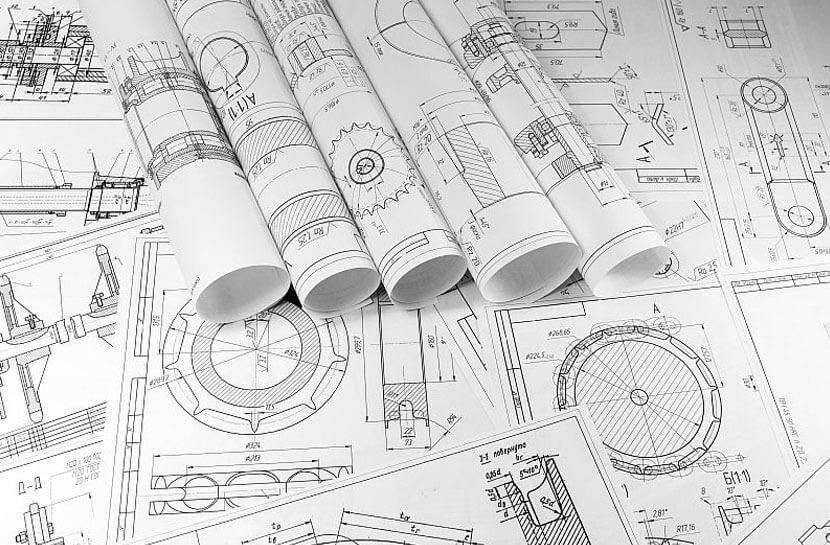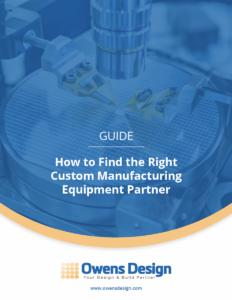Balancing Act: Design-to-cost gives users the upper hand in product development

Successful product development requires achieving the proper balance between cost, performance, and schedule. For capital equipment OEMs, cost is a high-priority issue and often the difference between winning or losing. Studies have shown that most product cost is determined during the early phases of design and development. Design-to-cost is a methodology that treats cost as a design objective equal in importance to performance and
schedule through all stages of the project. Realistic cost targets are established through early trade-off studies and a process is established to drive the design to meet these targets. We’ll visit a few key principles of design-to-cost as it applies to low volume, capital equipment product development.
Establish a Cost Target
Establishing a cost target is the first key step in the design-to-cost process. The cost target must be established in relation to key specifications, performance, and schedule in a rational way. Too often, the cost is ignored until the product concept is developed. When the cost is too high, the development team must iterate on the solution, wasting valuable time. It is critical to establish an achievable target cost up front-up to 70% of the cost of a project is defined in the concept stage. In most cases, the functional specifications are not well enough defined to provide a truly accurate cost model. The objective is to establish budgets for each part of the tool that support the total cost structure, utilizing a top-down/bottoms-up method. The successful development team will then be able to rapidly compare multiple concepts for cost as well as performance and schedule.
Solidifying performance requirements is a key element to establishing target cost. Performance factors must be known and the trade-off between performance and cost examined closely. Increments in cost must be justified by improvements in system designs, materials, or production methods while staying within the total cost target.
Implement Value Engineering Practices
Conceptual designs must also be viewed from a value engineering perspective. Value engineering is a technique used for analyzing a design to determine if its function justifies the cost. An item that consistently performs the required function at the lowest total cost represents the best value. Value engineering can help identify opportunities to remove unnecessary costs while assuring that quality, reliability, performance and other critical factors continue to meet requirements. Too often, a significant cost is added to the product by design elements whose cost exceeds their functional value. The frivolous or overpriced features must be identified and eliminated during the design process or will add unnecessary cost.
Estimate Costs
Once you establish your target cost, you’re ready to manage the design to meet these targets. Accurate cost estimation is required to compare design cost against target cost and evaluate the cost impact of design alternatives at the sub-system level. Several different costing methods may be employed to determine detailed costs, as follows:
1. It is important for the design engineer to have a close connection to actual costs. The most critical element of detailed costing is that it must be based on reality. An engineer should be able to justify a price target.
2. Databases that store design and cost history are invaluable for reducing the design cost. Engineers should review cost estimates versus actual cost for past projects in detail. Cost data should be easily accessible to the design team. 3. Engineers must also have regular contact with the supply base. Detailed designs should be sent to suppliers for pricing as early as possible. If the price is higher than expected, the cost drivers should be prioritized and reviewed with emphasis on changing the design to reduce total cost. This “design-it-twice” approach can have a dramatic effect on overall cost reduction butrequires enough time in the project schedule to allow it to be successful.
Tracking the Costs
Another key element to design to cost is tracking costs as the design evolves. Though there are many tools that do this, each design engineer must be trained in a consistent process that allows comparison to target cost without hours of effort. Tracking costs must also include quantity roll-offs for materials. Here it is important to know what the roll-offs are for your supply base and how your materials group will likely procure these materials. Though prices will vary by commodity type, some typical price roll-off curves for three fabrication processes are shown in the chart below. Individual parts will vary substantially from these averages. For those that are procuring materials from the Far East freight, taxes and duties must be factored into the roll-ups.
Manufacturing Labor Overruns
The manufacturing labor component for low volume, complex capital equipment is often dramatically underestimated by design engineering. Due to the high materials cost, labor is typically only 5% to 15% of the cost of goods sold (COGS). A 50% labor overrun can, therefore, be quickly overshadowed by a small percentage material overage, resulting in labor estimates receiving little attention during the design process. This problem is compounded by the fact that labor is difficult to estimate based on reviewing design models, especially in low volumes. It is typically more accurate to have a historical database of similar assemblies that can be benchmarked. Quantity also has a large effect on total labor hours as material and work area setup can be a large adder for low quantity builds.
Development Schedule Impacts
Scheduling can have a dramatic effect on design-to-cost. Management provides a constant pressure to compress product development time. If these times are compressed too much or the design engineer falls behind schedule, an “any design will do” mentality may take hold. This results in a more expensive design as performance and reliability cannot be compromised. It is important to take proactive steps to counteract this tendency.
Final Thoughts
Though design-to-cost is not a magic formula which, given the right input, it automatically leads to cost-efficient products. It is a work approach that integrates proven tools and elements of excellent product development in a highly focused way to find a design that maximizes customer value at minimum cost. Products developed within a design-to-cost process are cost
effective to produce, maintain, and are delivered on time and within budget.
